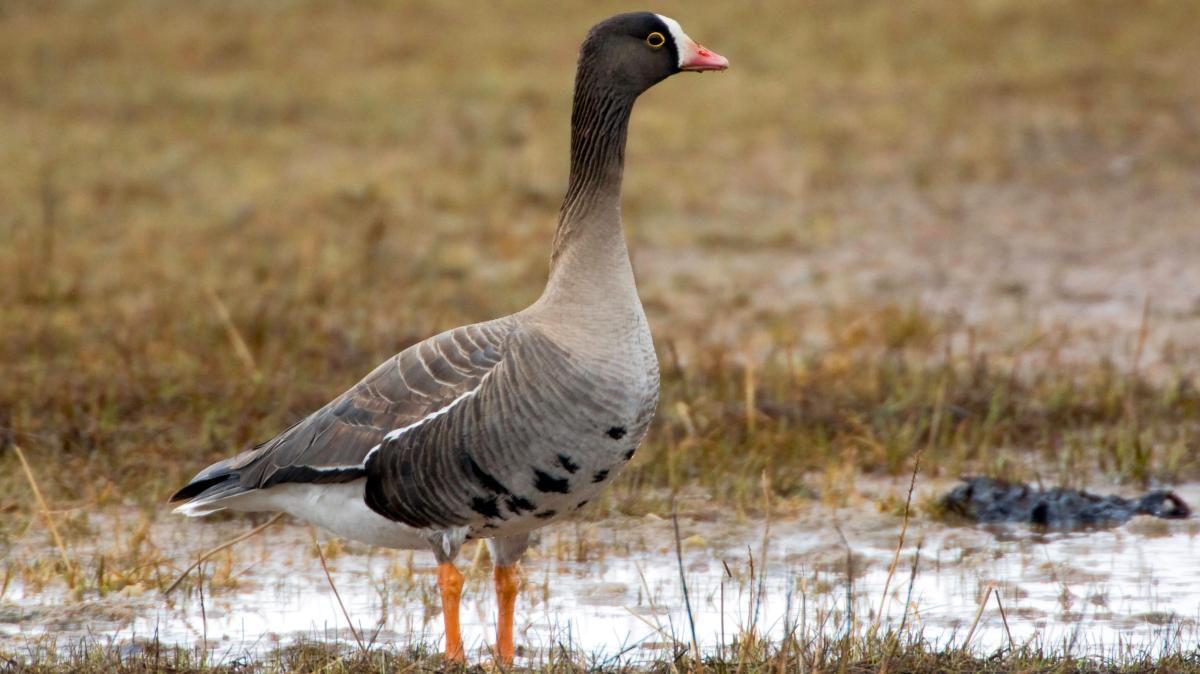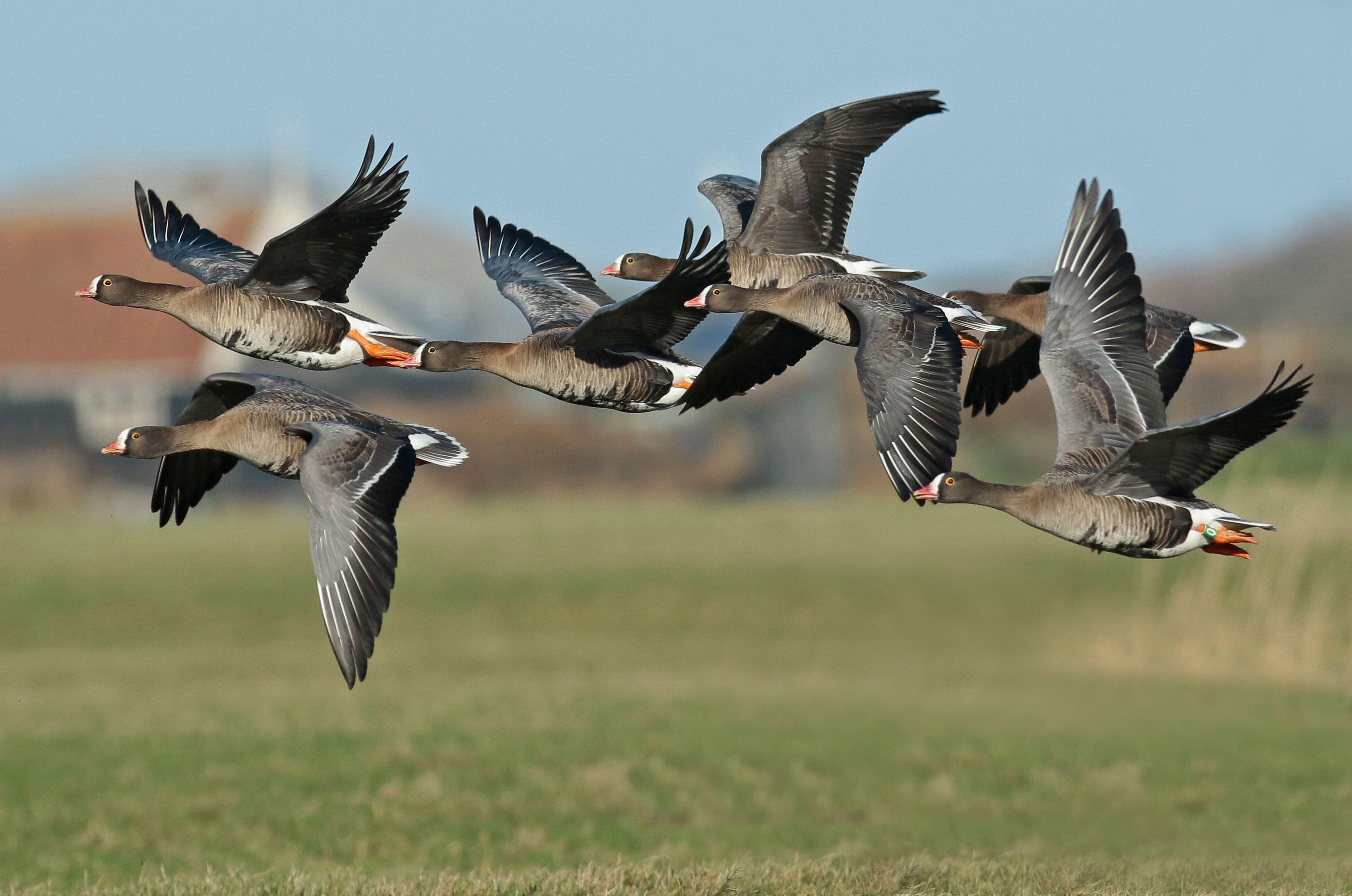The latest source of tension between Sweden and Norway has Russian ancestry, honks like a rusty gate and is on the run from a team of marksmen.
Swedish conservationists have expressed outrage after the Norwegian authorities put a contract on the head of an endangered lesser white-fronted goose that had strayed north over the border from Sweden. There was no mention of hunters attempting a kill — yet.
At the heart of the dispute is Sweden’s efforts to revive an endangered Arctic population of the birds, which the Norwegian authorities say encroach on their turf and spread dangerous and undesirable habits among their own geese.
The species, which has vivid orange legs and grows to a modest length of about 25in, was once common at breeding grounds around the fringe of the Arctic Circle, from the western coast of Norway to the Bering Strait. In the winter it flies south to more temperate climes, including Britain.
In the 1940s, a rare sighting of the bird on the Severn estuary prompted the distinguished British ornithologist Peter Scott to found the Wildfowl and Wetlands Trust and the Slimbridge reserve in Gloucestershire. Over the past two years the geese have also been seen in Norfolk.
In recent decades, populations of the geese in northern Sweden have been affected by climate change, the industrialisation of agriculture and arrival of invasive predators such as the mink. There are now thought to be as few as 150 in the region.
Swedish conservationists have tried to revitalise the population by bringing in geese caught in the wild in Russia. These are used to breed goslings in captivity that are then released. Sarah Nordlinder, goose project manager at the Swedish Association for Hunting and Wildlife Management (SAHWM), said the programme had saved the population from local extinction.
Sarah Nordlinder
PROJEKT FJALLGAS
Across the border in Norway, however, there is consternation, because the Norwegian and Swedish lesser white-fronted geese have different winter migration “flyways”. The Norwegian birds are used to making a long and risky journey to Greece, but their Swedish counterparts decamp to Germany and the Netherlands instead.
The Norwegian Environment Agency is worried about what happens when the Swedish geese wander across the border and mingle with their brethren on the Norwegian side. The agency argues that if the wild Norwegian geese start taking holiday tips from the captivity-bred Swedish birds, they may attempt hazardous, unfamiliar migrations and lose large numbers in the process.
“It is of huge concern that a mixing between the wild and the semi-domestic populations will occur,” Jo Anders Auran, an adviser to the agency, said. “The birds will lose their original adaptations to natural conditions. Reduced survival and reproduction and a lost original flyway will be the result.”
That has led the Norwegians to take drastic measures. A kill notice was issued in May for a Swedish goose that had slipped into Norway.
So far, the infiltrator has escaped death and last week was spotted unharmed in northern Norway. He is thought to have picked up a Norwegian girlfriend.
• How Ukraine war has hit bird migrations
The attempted hit job is not unprecedented. The SAHWM said that Norway shot three Swedish geese in similar circumstances between 2012 and 2015, although the Norwegians insisted it was only one.
Nordlinder said that Norway’s justification was absurd. “There is currently no scientific evidence supporting the claim that this constitutes a risk,” she said. “This concern is particularly groundless given that the individual in question is a male already integrated into the Norwegian population and is expected to follow his mate to her established migration grounds.”


